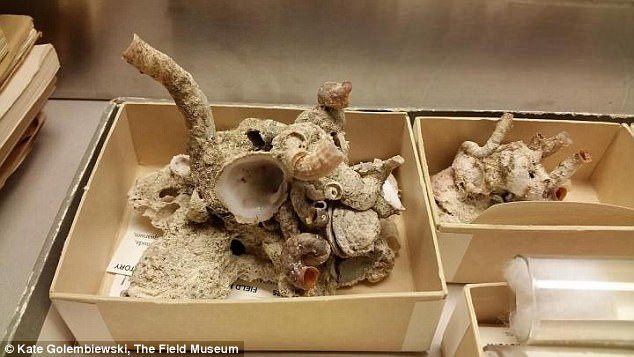New species grows attached to USS Vandenberg
Build it, and they will come. Who knew “they” wasn’t exclusive to scuba divers but a brand new snail species? Say hello to the Thylacodes Vandyensis, the latest edition to the non-native Keys’ species. Recognize the name? This gatstropoda vermatidae or a worm snail was discovered and only lives on the scuttled USS Vandenberg. But this isn’t an ordinary cartoon-like snail; the brightly orange colored Vandy snail has Spiderman-like powers, is growing like a garden weed and has already been labeled invasive by potentially inhibiting coral growth and might be dangerous to loggerhead turtles.
Dr. Rudiger Bieler, a marine biologist with the Field Museum in Chicago and Mote Marine, discovered a mere three snails back in 2014 and by 2016 found thousands attached to the deck of the scuttled Vandenberg vessel, which was sunk off Key West in 2009 to become an artificial reef. According to its DNA, the Vandy snail’s nearest relatives are from the Indo- Pacific region of the oceans and the best guess is that a cousin hitched a ride on an exotic hull to the Keys. The USS Vandenberg provides prime uncluttered real estate for the Vandy snails, which live by permanently attaching themselves to a surface.
As with any snail, slime is a major component to the Vandy snail’s function. Instead of using their mucus output to move around like a garden snail, these thumb sized predators have extra tentacles to shoot out a spiderman-like slime web to catch their food. Their lengthy tongues have barbs to filter food and don’t produce floating larvae but babies that bind themselves as well to the nearest surface.
“We know that the mucus deters fish; any presence of it and fish will not go near the snail to feed,” said Bieler. “Also the mucus changes the way coral grows and can potentially kill it, producing dead spots for snails to live.” For now, the Vandy snails are secluded on the Vandenberg but they could present a threat to the live coral ecosystems. Another consideration is that similar worm snails in Australia have been known to host parasites that affect loggerhead turtles.
“Without any predators and new to science, they are like a canary in a coal mine. We see them as an aggressive species we need to monitor,” said Bieler, who is studying the effects of native and non native species on the artificial reefs and living reefs in the Keys. Recently, Bieler introduced the Vandy snail on PeerJ.com and has garnered international notice, from The New York Times to the UK Daily Mail. The Swedish National Broadcast even took notice.
CUTLINE: The Thylacodes Vandyensis is usually bright orange until taken out of the water. KATE GOLEMBIEWSKI, The Field Museum.
I knew I had never seen a worm snail like this before.” — Dr. Rudiger Bieler, of The Field Museum and Mote Marine



























